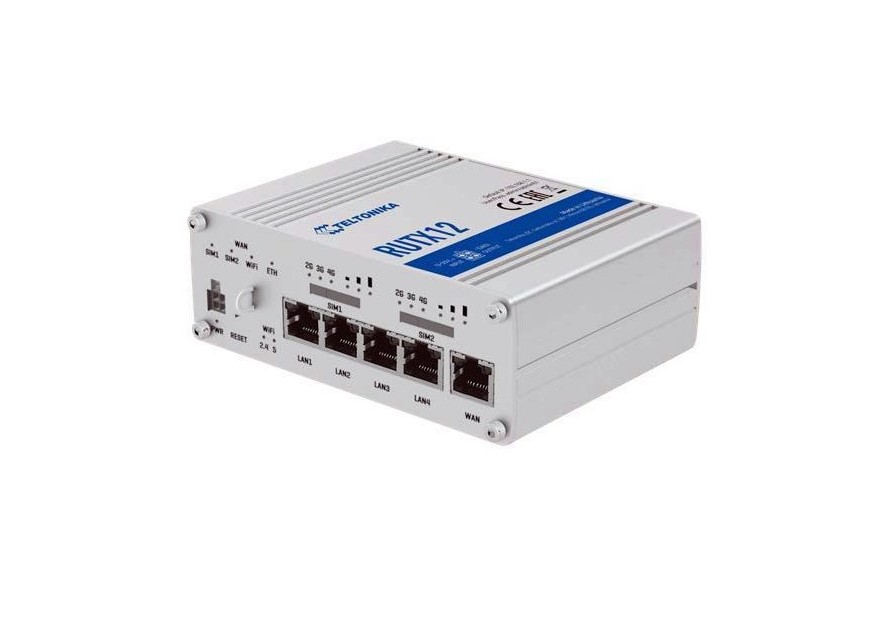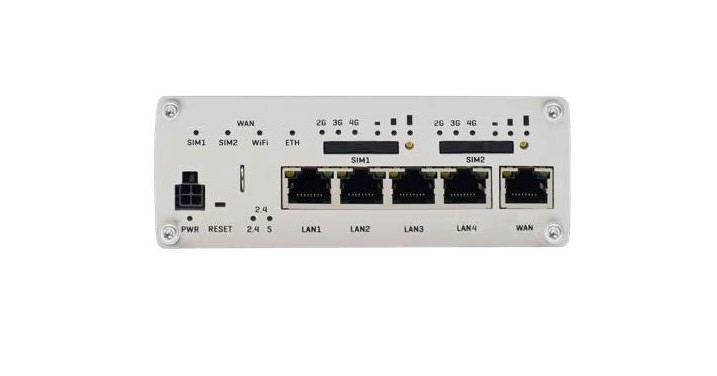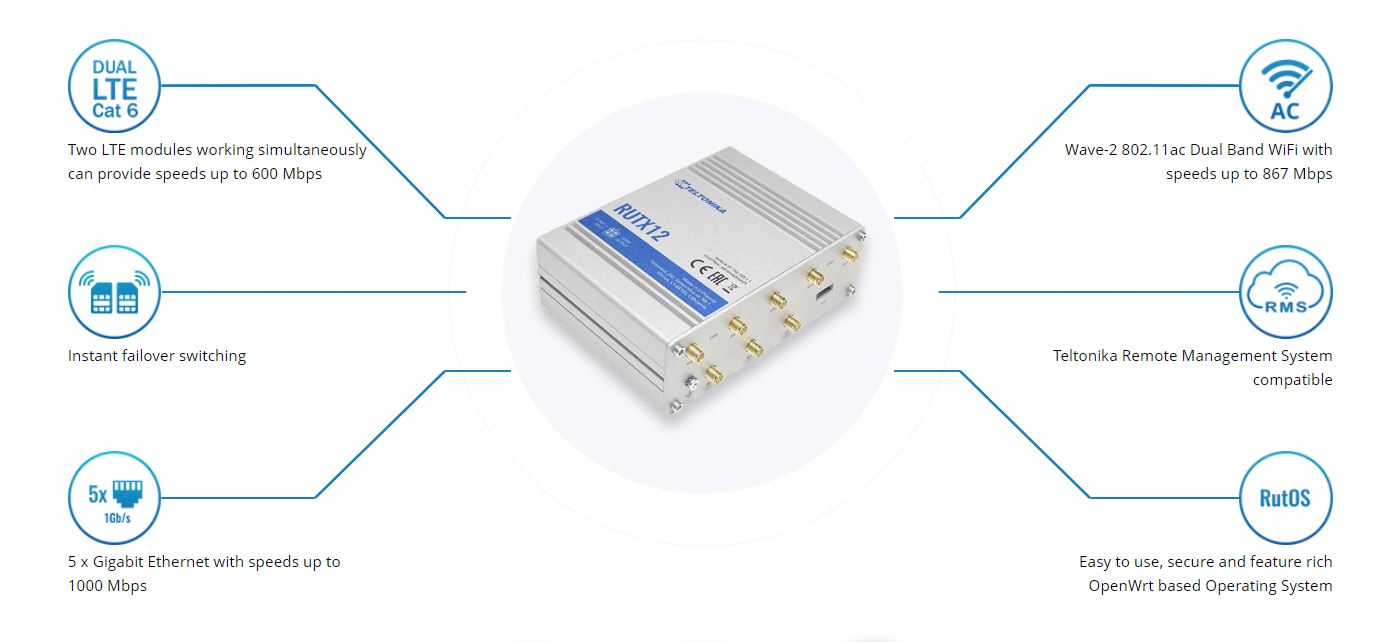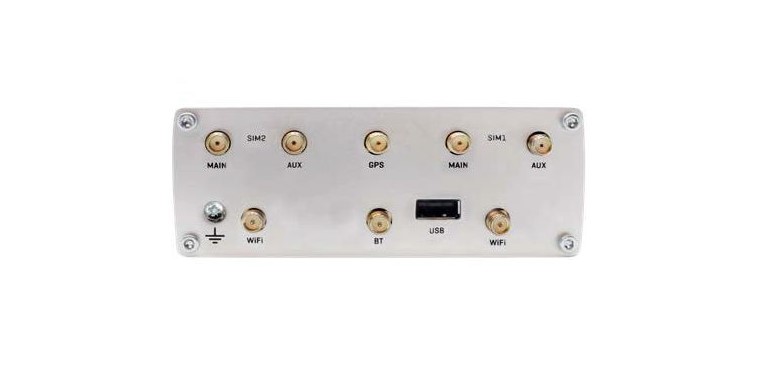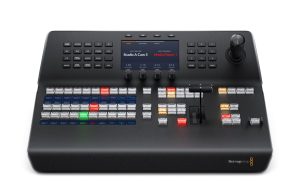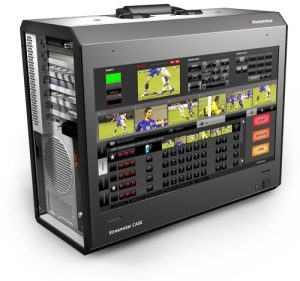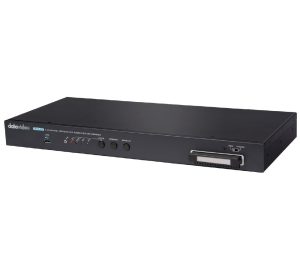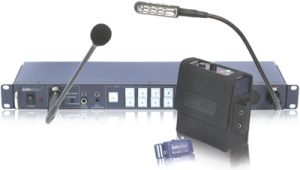Teltonika RUTX12 | Profesjonalny przemysłowy router 4G LTE | Cat 6, Dual Sim, 1x Gigabit WAN, 3x Gigabit LAN, WiFi 802.11 AC
2.500,10 zł
Produktu nie ma na magazynie, nie mamy też pewnej informacji, czy jest dostępny u naszych dostawców. Skontaktuj się z nami, a my udzielimy informacji kiedy można się go spodziewać. Jeśli dokonasz zamówienia z produktami oznaczonymi tym statusem, nie dokonuj płatności do czasu otrzymania potwierdzenia zamówienia.
Opis produktu
Teltonika RUTX12 to potężny dwupasmowy, bezprzewodowy, podwójny router LTE6, dual SIM z technologią Wave-2 802.11ac. Przeznaczony jest do zastosowań o znaczeniu krytycznym. Dwa jednocześnie działające modemy LTE6 mogą zapewnić prędkości do 600 Mb/s z funkcją równoważenia obciążenia.
RUTX12 wyposażony jest w 5x gigabitowych portów Ethernet, moduł Bluetooth LE, dwuzakresowe AC WiFi, port USB oraz oprogramowanie RutOS i funkcje bezpieczeństwa, które sprawiają, że to urządzenie jest niezastąpione w aplikacjach, w których utrata połączenia nie jest możliwa.
Dzięki funkcji SMS management możliwe jest m.in. restartowanie urządzenia, łączenie i sprawdzanie statusu połączenia. Natomiast funkcja failover nie tylko zapewnia bezawaryjność połączenia w przypadku, gdy jedna z kart SIM zostanie rozłączona, ale także umożliwia obniżenie kosztów poprzez ustawienie opcji failover raoming, która przełącza połączenie na drugą kartę SIM w sytuacji gdy pierwsza z kart rejestruje się w sieci roamingowej i odwrotnie. Przełączanie pomiędzy SIM1 i SIM2 można również uzależniać od wielkości pobieranych cyklicznie danych (przez dzień, tydzień lub miesiąc), a także od poziomu zasięgu.
Najważniejsze cechy:
- Dwa moduły LTE6 działające jednocześnie, zapewniające prędkość do 600 Mb/s
- Wave 2 802.11ac Dual Band WiFi o prędkości do 867 Mb/s
- Dual SIM – znacznie obniża koszty roamingu
- 5x portów Gigabit Ethernet o prędkości do 1000 Mb/s
- Port USB
- Anteny: Bluetooth, GNSS (GPS), 2x Mobile, 2x WiFi
- System zdalnego zarządzania Teltonika – RMS
- Natychmiastowe przełączanie awaryjne
- Łatwy w użyciu, bezpieczny i bogaty w funkcje system operacyjny oparty na OpenWrt
|
MOBILE
|
|
|
Mobile module
|
2 x 4G (LTE) – Cat 6 up to 300 Mbps, 3G – up to 42 Mbps |
|
SIM/mobile module switch
|
2 SIM cards, one for each mobile module, auto switch cases: weak signal, data limit, SMS limit, roaming, no network, network denied, data connection fail, SIM idle protection (planned) |
|
Status
|
Signal strength, SINR, RSRP, RSRQ, Bytes sent/received, Mobile module in use |
|
SMS
|
SMS status, SMS configuration, send/read SMS via HTTP POST/GET, Email to SMS, SMS to Email, SMS to TTP, SMS to SMS, SMS auto replay, scheduled SMS (planned), SMPP (planned) |
|
Black/White list
|
Operator black/white list |
|
Multiple PDN (planed)
|
Possibility to use different PDNs for multiple network access and services |
|
Band management
|
Band lock, Used band status display |
|
APN
|
Auto APN |
|
Bridge mode
|
Direct connection (bridge) between mobile ISP and device on LAN |
|
WIRELESS
|
|
|
Wireless mode
|
802.11b/g/n/ac (WiFi 5) with data transmission rates up to 867 Mbps (Dual Band, MU-MIMO), 802.11r fast transition, Access Point (AP), Station (STA) |
|
WiFi security
|
WPA2-Enterprise-PEAP, WPA2-PSK, WPA-PSK, WEP; AES-CCMP, TKIP, Auto Cipher modes, client separation |
|
ESSID
|
ESSID stealth mode |
|
Wireless Hotspot
|
Captive portal (Hotspot), internal/external Radius server, built in customizable landing page |
|
ETHERNET
|
|
|
WAN
|
WAN port (can be configured as LAN) 10/100/1000 Mbps, compliance with IEEE 802.3, IEEE 802.3u, 802.3az standards, supports auto MDI/MDIX crossover |
|
LAN
|
4 x LAN ports, 10/100/1000 Mbps, compliance with IEEE 802.3, IEEE 802.3u, 802.3az standards, supports auto MDI/MDIX |
|
BLUETOOTH
|
|
|
Bluetooth 4.0
|
Bluetooth low energy (LE) for short range communication |
|
NETWORK
|
|
|
Routing
|
Static routing, Dynamic routing (BGP, OSPF v2, RIP v1/v2, EIGRP, NHRP) |
|
NetSnapper (optional)
|
Mobile connection management, data compression VPN client (not available in standard FW) |
|
Network protocols
|
TCP, UDP, IPv4, IPv6, ICMP, NTP, DNS, HTTP, HTTPS, FTP, SMTP, SSL v3, TLS, ARP, VRRP, PPP, PPPoE, UPNP, SSH, DHCP, Telnet client, SNMP, MQTT, Wake on LAN (WOL) |
|
VoIP passthrough support
|
H.323 and SIP-alg protocol NAT helpers, allowing proper routing of VoIP packets |
|
Connection monitoring
|
Ping Reboot, Wget reboot, Periodic Reboot, LCP and ICMP for link inspection |
|
Firewall
|
Port forwards, traffic rules, custom rules |
|
DHCP
|
Static and dynamic IP allocation, DHCP Relay, Relayd |
|
QoS / Smart Queue Management (SQM)
|
Traffic priority queuing by source/destination, service, protocol or port, WMM, 802.11e |
|
DDNS
|
Supported >25 service providers, others can be configured manually |
|
Network backup
|
VRRP, Mobile, Wired and WiFi WAN options, each of which can be used as an automatic Failover |
|
Load balancing
|
Balance Internet traffic over multiple WAN connections |
|
SSHFS (optional)
|
Possibility to mount remote file system via SSH protocol (not available in standard FW) |
|
SECURITY
|
|
|
Authetication
|
Pre-shared key, digital certificates, X.509 certificates |
|
Firewall
|
Pre-configured firewall rules can be enabled via WebUI, unlimited firewall configuration via CLI; DMZ; NAT; NAT-T |
|
Attack prevention
|
DDOS prevention (SYN flood protection, SSH attack prevention, HTTP/HTTPS attack prevention), port scan prevention (SYN-FIN, SYN-RST, X-mas, NULL flags, FIN scan attacks) |
|
VLAN
|
Port based and tag based VLAN separation |
|
Mobile quota control
|
Custom data limits for both SIM cards |
|
WEB filter
|
Blacklist for blocking out unwanted websites, Whitelist for specifying allowed sites only |
|
Access control
|
Flexible access control of TCP, UDP, ICMP packets, MAC address filter |
|
VPN
|
|
|
OpenVPN
|
Multiple clients and a server can run simultaneously, 12 encryption methods |
|
OpenVPN Encryption
|
DES-CBC, RC2-CBC, DES-EDE-CBC, DES-EDE3-CBC, DESX-CBC, BF-CBC, RC2-40-CBC, CAST5-CBC, RC2-64-CBC, AES-128-CBC, AES-192-CBC, AES-256-CBC |
|
IPsec
|
IKEv1, IKEv2, with 5 encryption methods for IPsec (DES, 3DES, AES128, AES192, AES256) |
|
GRE
|
GRE tunnel |
|
PPTP, L2TP
|
Client/Server instances can run simultaneously |
|
Stunnel
|
Proxy designed to add TLS encryption functionality to existing clients and servers without any changes in the program’s code |
|
DMVPN
|
Method of building scalable IPsec VPNs |
|
SSTP
|
SSTP client instance support |
|
MODBUS
|
|
|
Modbus TCP slave
|
ID filtering: Respond to one ID in range [1;255] or any Allow remote access: Allow access through WAN Custom registers: Modbus TCP custom register block, which allows to read/write to a file inside the router, and can be used to extend Modbus TCP slave functionality |
|
Modbus TCP master
|
Supported functions: 01, 02, 03, 04, 05, 06, 15, 16 Supported data formats: 8 bit: INT, UINT; 16 bit: INT, UINT (MSB or LSB first); 32 bit: float, INT, UINT (ABCD (big-endian), DCBA (little-endian), CDAB, BADC) |
|
MQTT gateway
|
Gateway Allows sending commands and receiving data from Modbus Master trough MQTT broker |
|
Modbus data to server
|
Protocols HTTP(S), MQTT, Azure MQTT (planned) |
|
MONITORING & MANAGEMENT
|
|
|
WEB UI
|
HTTP/HTTPS, status, configuration, FW update, CLI, troubleshoot, event log, system log, kernel log |
|
FOTA
|
Firmware update from server, automatic notification |
|
SSH
|
SSH (v1, v2) |
|
SMS
|
SMS status, SMS configuration, send/read SMS via HTTP POST/GET |
|
CALL
|
Reboot, Status, Mobile data on/off, Output on/off |
|
TR-069
|
OpenACS, EasyCwmp, ACSLite, tGem, LibreACS, GenieACS, FreeACS, LibCWMP, Friendly tech, AVSystem |
|
MQTT
|
MQTT Broker, MQTT publisher |
|
SNMP
|
SNMP (v1, v2, v3), SNMP trap |
|
JSON-RPC
|
Management API over HTTP/HTTPS |
|
Modbus
|
Modbus TCP status/control |
|
RMS
|
Teltonika Remote Management System (RMS) |
|
IoT PLATFORMS
|
|
|
Clouds of things
|
Allows monitoring of: Device data, Mobile data, Network info, Availability |
|
ThingWorx
|
Allows monitoring of: WAN Type, WAN IP Mobile Operator Name, Mobile Signal Strength, Mobile Network Type |
|
Cumulocity
|
Allows monitoring of: Device Model, Revision and Serial Number, Mobile Cell ID, ICCID, IMEI, Connection Type, Operator, Signal Strength, WAN Type and IP |
|
Azure IoT Hub
|
Can send device IP, Number of bytes send/received/ 3G connection state, Network link state, IMEI, ICCID, Model, Manufacturer, Serial, Revision, IMSI, Sim State, PIN state, GSM signal, WCDMA RSCP, WCDMA EC/IO, LTE RSRP, LTE SINR, LTE RSRQ, CELL ID, Operator, Operator number, Connection type, Temperature, PIN count to Azure IoT Hub server |
|
SYSTEM CHARACTERISTICS
|
|
|
CPU
|
Quad-core ARM Cortex A7, 717 MHz |
|
RAM
|
256 MB, DDR3 |
|
FLASH memory
|
256 MB Flash |
|
FIRMWARE / CONFIGURATION
|
|
|
WEB UI
|
Update FW from file, check FW on server, configuration profiles, configuration backup |
|
FOTA
|
Update FW/configuration from server |
|
RMS
|
Update FW/configuration for multiple devices at once |
|
Keep settings
|
Update FW without losing current configuration |
|
FIRMWARE CUSTOMIZATION
|
|
|
Operating system
|
RutOS (OpenWrt based Linux OS) |
|
Supported languages
|
Busybox shell, Lua, C, C++ |
|
Development tools
|
SDK package with build environment provided |
|
LOCATION TRACKING
|
|
|
GNSS
|
GPS, GLONASS, BeiDou, Galileo and QZSS |
|
Coordinates
|
GNSS coordinates via WebUI, SMS, TAVL, RMS |
|
NMEA
|
NMEA 0183 |
|
Server software
|
Supported server software: TAVL, RMS |
|
Mobile Network Geolocation
|
Get approximate device location on RMS based on mobile cell tower position (without using GPS) |
|
Geofencing
|
Configurable multiple geofence zones |
|
USB
|
|
|
Data rate
|
USB 2.0 |
|
Applications
|
Samba share, custom scripts (planned) |
|
External devices
|
Possibility to connect external HDD, flash drive, additional modem, printer (planned) |
|
Storage formats
|
FAT, FAT32, NTFS |
|
INPUT/OUTPUT
|
|
|
Input
|
1x Digital Input |
|
Output
|
1x Digital Output |
|
Events
|
SMS, Email, RMS |
|
POWER
|
|
|
Connector
|
4 pin industrial DC power socket |
|
Input voltage range
|
9 – 50 VDC, reverse polarity protection, voltage surge/transient protection |
|
PoE (passive)
|
Passive PoE. Possibility to power up through LAN1 port, not compatible with IEEE802.3af and 802.3at standards |
|
Power consumption
|
Idle: |
|
PHYSICAL INTERFACES (PORTS, LEDS, ANTENNAS, BUTTONS, SIM)
|
|
|
Ethernet
|
5 x RJ45 ports, 10/100/1000 Mbps |
|
I/Os
|
1 Digital Input, 1 Digital Output on 4 pin power connector |
|
Status LEDs
|
6 x connection status LEDs, 6 x connection strength LEDs, 10 x Ethernet port status LEDs, 4 x WAN status LEDs, 1x Power LED, 2.4G and 5G WiFi LEDs |
|
SIM
|
2 x SIM slots (Mini SIM – 2FF), 1.8 V/3 V, external SIM holders |
|
Power
|
4 pin DC connector |
|
Antennas
|
4 x SMA for LTE, 2 x RP-SMA for WiFi, 1 x RP-SMA for Bluetooth, 1 x SMA for GNNS |
|
USB
|
USB A port for external devices |
|
Reset
|
Reboot/User default reset/Factory reset button |
|
PHYSICAL SPECIFICATION
|
|
|
Casing material
|
Full aluminium housing |
|
Dimensions
|
95 x 132 x 44 mm (L x W x H) |
|
Weight
|
540 g |
|
Mounting options
|
DIN rail (can be mounted on two sides), flat surface placement |
|
OPERATING ENVIRONMENT
|
|
|
Operating temperature
|
-40 C to 75 C |
|
Operating humidity
|
10 % to 90 % non-condensing |

